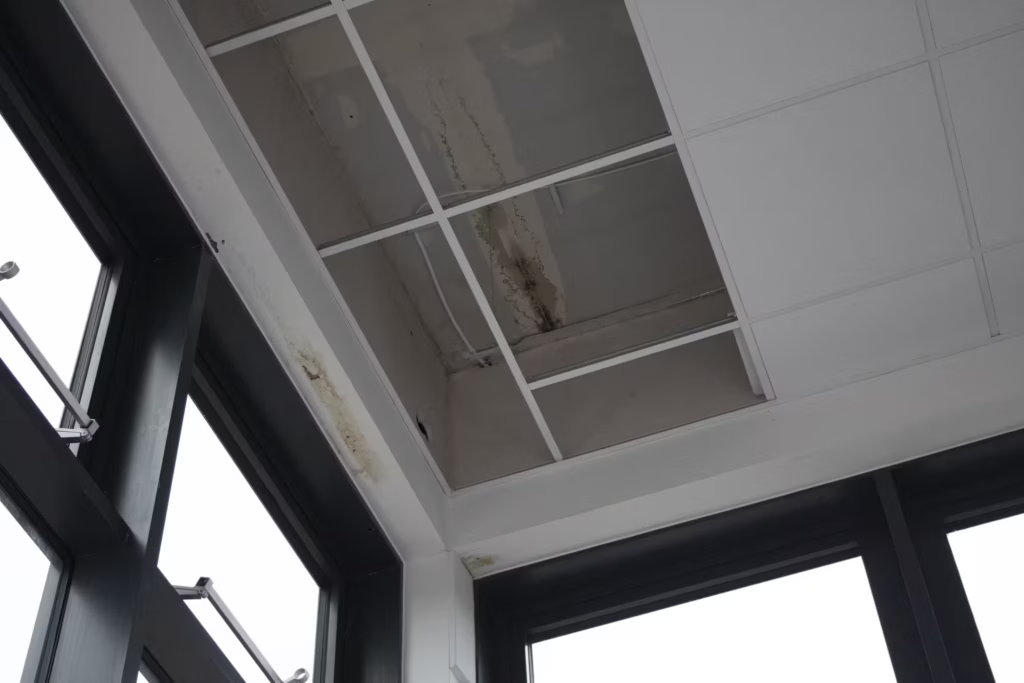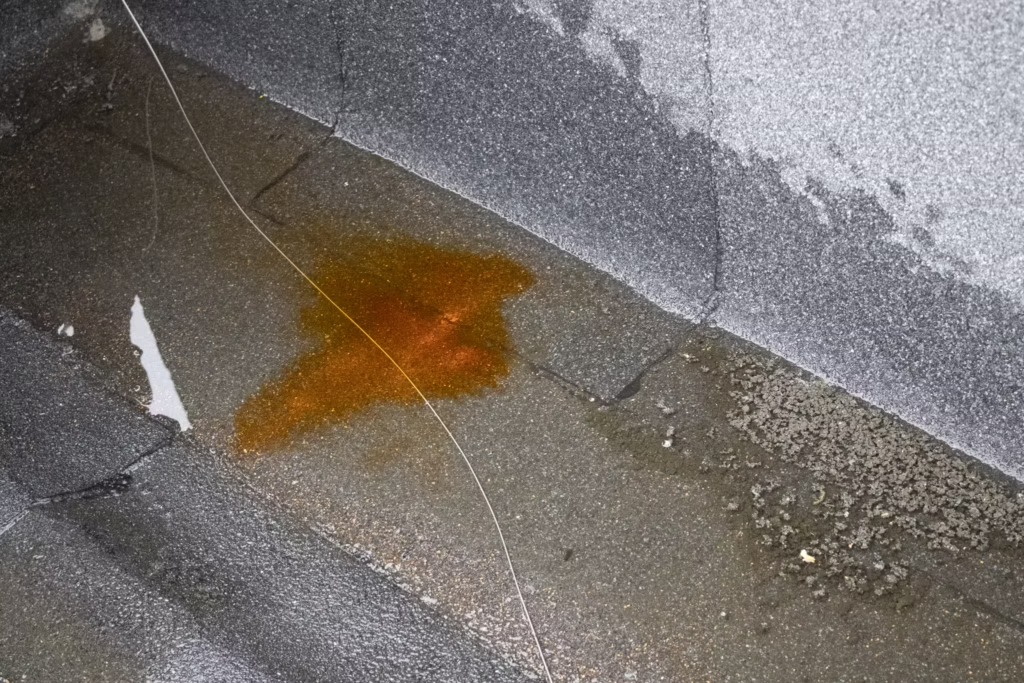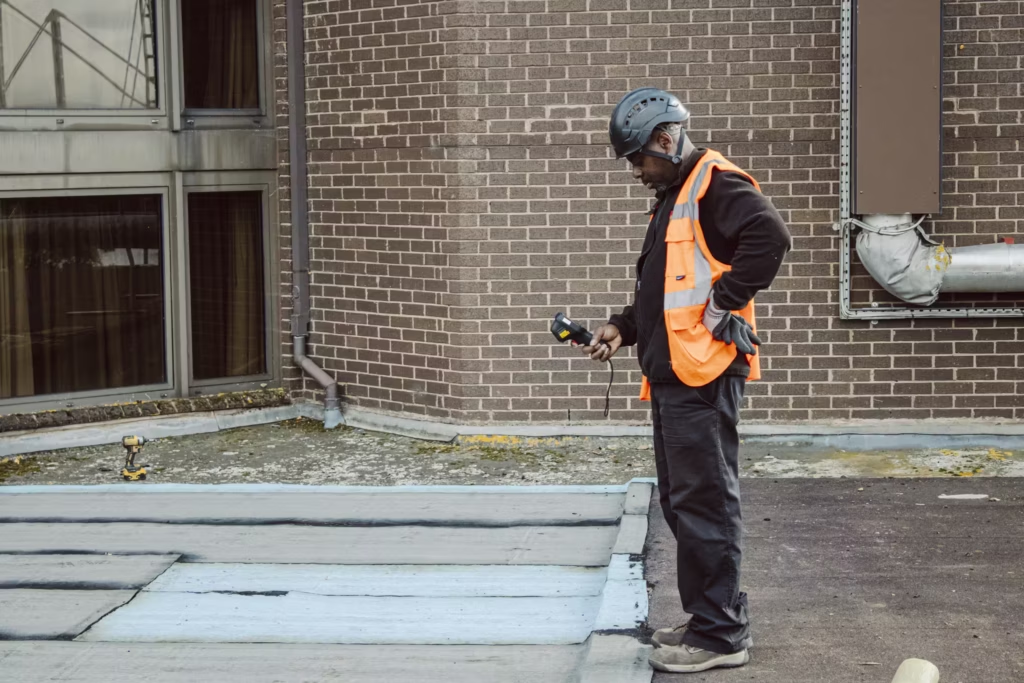If you manage a commercial or public building with a flat roof, BS 6229 should be your north star. If it’s not already, keep on reading.
BS6229 is essentially the UK’s code of practice for flat roofs with continuously supported flexible waterproof coverings.
It turns roof care from guesswork into a documented, repeatable process. Follow it well and you’ll minimise failures, maximise lifespan, stay compliant, and improve energy performance (while avoiding the spiralling costs that come with leaks and emergency call-outs!).
What does BS 6229 actually cover, and why does it matter?
BS 6229 sets out best practice across the full life of a flat roof: design, installation, inspection, and maintenance. It dives into practical essentials from falls and drainage, upstands, joints and penetrations, vapour control, insulation, and ongoing care.
Put simply, working to the standard will help you to:
- Minimise failures by getting the details right (the places roofs most often fail).
- Maximise lifespan through planned inspections and timely, targeted maintenance.
- Ensure compliance and provide auditable evidence for surveyors, insurers, and building control.
- Improve energy efficiency by keeping insulation dry and vapour control layers intact.
It also gives installers a clear method to follow and gives inspectors a framework and evidence trail to verify the roof meets best practice.
A long-term protection plan, not a one-off task
It’s rare for a flat roof to simply ‘fail’ overnight.
Most problems with roofs start small – a blocked outlet, a cracked upstand, a perished seal around a penetration – and then, they escalate.
BS 6229 turns this on its head by formalising planned preventative maintenance:
- fewer emergencies and unplanned closures
- better budget control and predictable capex
- extended service life of the waterproofing build-up
- reduced risk of internal damage and consequential loss
Why does the standard recommend two inspections a year?
BS 6229 requires at least two formal inspections annually, timed to coincide with the UK climate. These are usually in the Autumn and Spring. But why?
During Autumn, it’s a great time to clear leaves, moss, and wind-blown debris from outlets and gutters before winter. Debris causes ponding (standing water), which increases structural load and leak risk during heavy rain or snow.
And then, during Spring, it’s a great time to identify and fix damage caused by frost, ice, and storms (splits, cracks, joint failures, or lifted edges) before summer dries and curls them further or the next wet season compounds the issues.
These seasonal touchpoints catch problems early, when they’re quick and inexpensive to fix.
Where BS 6229 tells you to look (and why)
The standard focuses on the details because that’s exactly where most roofs fail.
Drainage systems
Outlets, scuppers, internal gutters, and downpipes must be clear and sized for the catchment. Poor falls or blocked outlets = ponding and premature failure.
Roof surface
Look for blistering, crazing, punctures, membrane shrinkage, and signs of trapped moisture. Persistent ponding after 48 hours is a red flag.
Upstands and edge details
These must form a continuous barrier. BS 6229 guides minimum upstand heights (commonly 150 mm above finished roof level) so water can’t crest in driving rain or snow.
Penetrations (vents, pipes, bases) and flashing
Interfaces of dissimilar materials move differently with temperature; without proper detailing, seals fatigue and leak.
These areas tend to be stress points where movement, weather, and workmanship meet. The standard’s detailing principles exist to absorb that stress without letting water in.

Visible warning signs your roof isn’t meeting expectations
If you spot any of the following, book a survey:
- Internal damp or staining – often remote from the leak source due to water tracking
- Ponding water that lingers after rainfall
- Vegetation growth, especially around outlets
- Blistering, splits, or cracks in the membrane or at the laps
- Loose, perished, or missing flashings and sealants
These signs don’t just indicate a cosmetic issue; they point to performance falling below the standard.

What a BS 6229-aligned inspection includes (beyond a quick look)
A professional inspection is systematic, documented, and evidence-led:
- Close-up examination of all details, including upstands, terminations, penetrations, laps, and outlets.
- Non-destructive testing, where appropriate, such as moisture meter readings and thermal imaging, to locate wet insulation and hidden moisture paths.
- Targeted intrusive checks (e.g., core samples) only if needed to confirm build-up, deck type, vapour control integrity, or the presence of water within the system, followed by like-for-like patching.
- A comprehensive report with photographs, digital defect mapping, and prioritised recommendations so you can plan repairs and budgets confidently.
The difference is rigour: you get a diagnosis, not guesswork.

Why details matter: upstands, kerbs, and penetrations
BS 6229 highlights these areas because they interrupt the roof’s continuous surface. Different materials expand and contract at different rates, building movement concentrates at junctions, and rainwater pressure is highest where water changes direction or meets an obstacle. The standard’s guidance, such as maintaining a minimum 150 mm upstand height and using compatible, flexible detailing, creates the safety margin that keeps water out even in severe weather.
Maintenance practices that the standard emphasises
- Regular cleaning to keep the drainage free-flowing.
- Prompt, like-for-like repairs before small defects propagate under thermal cycling.
- Controlled access: walkways, pads, and clear routes to prevent ad-hoc foot damage.
- Accurate records: inspection dates, defects, repairs, photos, and warranties—so you can demonstrate due diligence and protect manufacturer guarantees.
Energy performance: BS 6229 and thermal realities
Wet insulation is pretty much useless.
Once water finds a path and saturates the layer, U-values worsen, heating and cooling loads rise, and condensation risks increase. BS 6229’s focus on vapour control, robust detailing, and moisture management is ultimately an energy story, not just a waterproofing one.
Keeping the system dry retains thermal performance and helps you hit Part L and EPC targets.
A practical 12-month plan (aligned to BS 6229)
- Autumn: Clear outlets and gutters; check falls; inspect upstands, laps, and penetrations; repair defects; verify safe access routes.
- Winter: Reactive checks after storms or freezes; keep critical outlets clear.
- Spring: Re-inspect for winter damage; conduct moisture/thermal checks if leaks are suspected; programme summer works.
- Summer: Execute planned repairs, overlays, or local refurbishments while conditions favour adhesion and curing.
- Year-round: Log everything—photos, repairs, materials—so warranties and compliance stand up to scrutiny.
Are you ready to benchmark your roof against BS 6229?
A flat roof inspection carried out to BS 6229 gives you clarity: what’s sound, what’s starting to fail, and what to do next, sequenced by risk and cost. You’ll receive an evidence-based roof survey report with digital defect mapping, moisture/thermal insights (where relevant), and a practical plan for repairs, waterproofing, or refurbishment.
Book a BS 6229-aligned flat roof inspection to protect your asset, your budgets, and your building users, before winter weather or summer storms test the system.